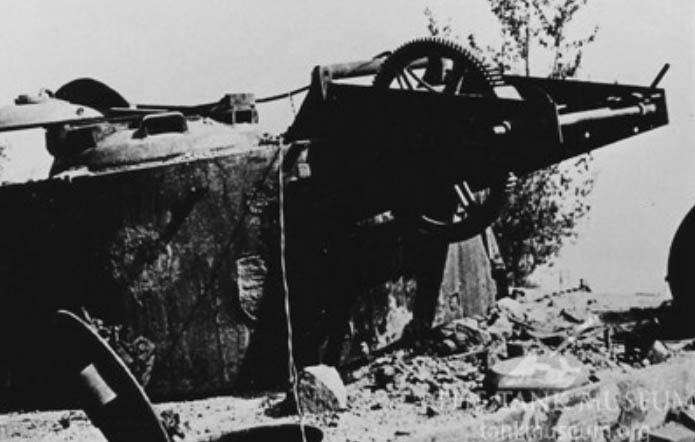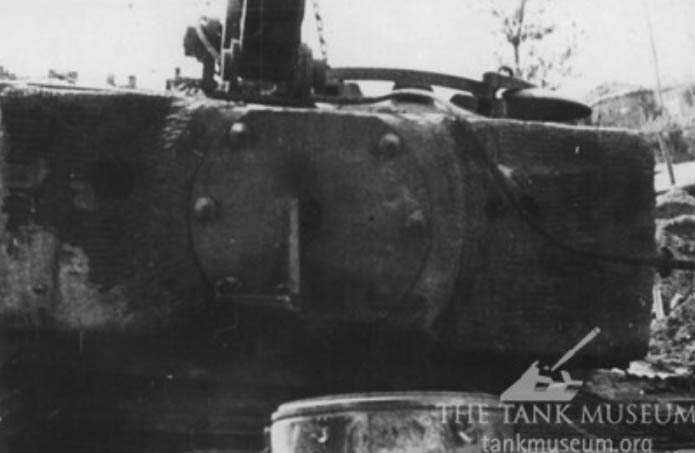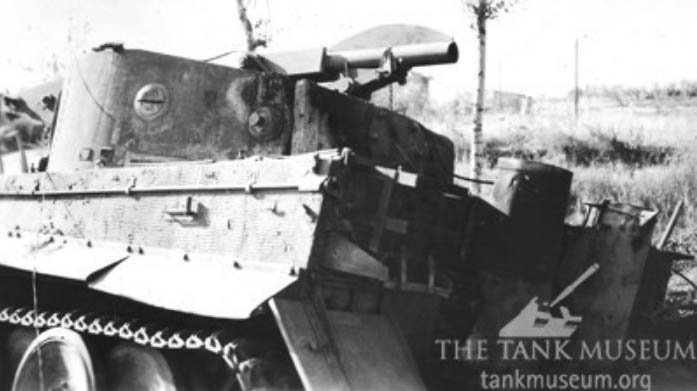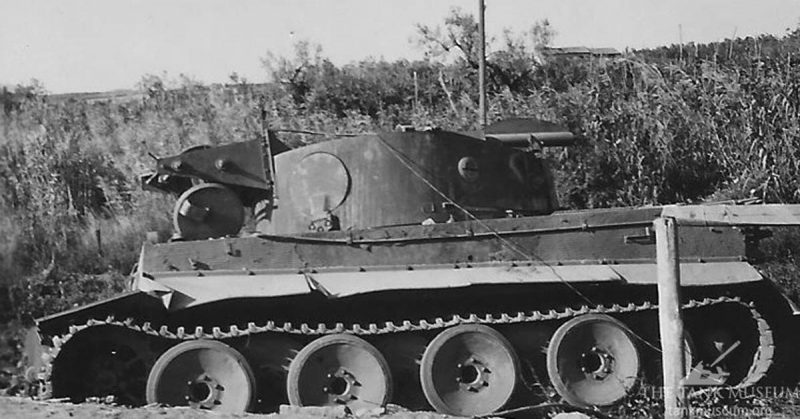These pictures have invariably been identified as an improvised Tiger recovery vehicle, photographed in Italy in 1944, but is it? Renowned tank historian David Fletcher examines the myth.
The late Tom Jentz, Tiger student extraordinaire, told me, and wrote in numerous books, that it was actually a mine clearing contraption which he had found described in an official report, devised by Schwere Panzer-Abteilung 508, taking a redundant tank and removing its gun they fitted a jib to the turret and a simple winch device on the back. The idea was to approach an anti-tank mine, lower an explosive charge over the mine, and then set it off, exploding the mine by sympathetic detonation.
The Report
The 508th had a fairly torrid time in Italy, losing most of their Tigers to one cause or another. This one was found abandoned by the roadside and duly photographed although nobody knew what it was at the time.
Part of the jib was missing so it was tentatively identified as a recovery vehicle.
As the original British report shows; under the heading of Tiger Recovery Vehicle, Technical Intelligence Summary No. 135, dated 19 July 1944 reports as follows:
‘Photographs of a captured specimen of the above equipment have been received from Italy.
‘It appears to consist of a normal Pz Kpfw Tiger modified by the removal of the 88mm gun and the mounting of a winch and derrick on the turret.
‘The winch is arranged high up at the rear of the turret, and what appears to be a socket for the derrick is provided in the centre of the turret roof near the front and facing forwards.
‘The derrick itself is not shown in the photographs. Although the gun and barrel sleeve have been removed, the mantlet is retained, the opening in its centre being covered by a roughly circular plate with a central aperture for the muzzle of an M.G.’
This was followed by a shorter note dated 1 August 1944; ‘Reference Summary 135 para. 8, it is now learned that the Pz Kpfw Tiger Recovery Vehicle recently examined in Italy was not a standard German equipment, but a local improvisation.’

Note that nothing is said about the insubstantial nature of the equipment, which might have been useful for basic servicing duties, but not for recovery.
Since then I have been told that it was a recovery vehicle and people have even assured me they can prove it, although I’ve never seen any proof yet.
Since I am not a student of German tanks, I don’t know, but given the Tiger’s reputation for suffering transmission damage when trying to tow another of its kind, and being aware that this was forbidden at the time, I have to say that I’m a bit dubious, added to which the recovery equipment, if that’s what it is, looks too flimsy in the pictures I’ve seen.
On the other hand, getting rid of mines by sympathetic detonation is not the best way of removing them. It can be tediously slow and can lead to enormous holes appearing in the road, which not everybody favours. So what is it?
Tom Jentz credits a report from 14th Armee dated 17th April 1944, which states that Schwere Panzer-Abteilung 508 (Heavy Tank Battalion 508) was in the process of designing a mine clearing device for a Tiger, which this is presumed to be.
Is there other evidence for a Tiger Recovery Vehicle?

Other sources claim that at least three Tiger recovery vehicles were built, which is thought to be unlikely.
Again according to Jentz (Germany’s Tiger Tanks No. 3, Schiffer Publishing Ltd. 1997) having one Tiger tank try to recover another was not condoned, except in an emergency, since the sophisticated transmission system wouldn’t stand it. A favourite method of towing a Tiger was by using two, sometimes as many as three, 18-ton Famo half-tracks (the largest in the range) coupled together.
Even so there is a report, based on the interrogation of captured prisoners of war, under the heading ‘Tiger tanks as towing vehicles’ which states:
‘If a Tiger tank has gearbox trouble, it is customary to dismantle the flexible couplings in the half shaft drives and tow it out of the immediate battle area by another Tiger, using two tow ropes secured in ‘X’ formation to correct the tendency of the towed tank to sway. Should, however, the track on a Tiger have ridden up over the sprocket teeth, the tractive effort required to move it is so great that two Tigers pull in tandem, each towing with crossed tow ropes.’

Perhaps the prisoner wasn’t aware that this was expressly forbidden, except in an emergency, but perhaps this was an emergency. Even using two tanks to rescue one often resulted in the loss of all three due to gearbox failure.
With the evidence available, it’s impossible to make a decisive decision whether this vehicle was a Tiger Recovery Vehicle, and if they ever existed in the first place. If you know of any evidence either way, please comment below.
A message from The Tank Museum:
“Please Support Us: As a charity, we rely on public support for all our activities. Our work is funded entirely by people like you. With your support, we can continue to create content. With the right support we might be able to do it more regularly – and can be even more ambitious. Please Click on the Banner Below.”
Thanks to the Tank Museum for this Blog, which originally appeared here.

